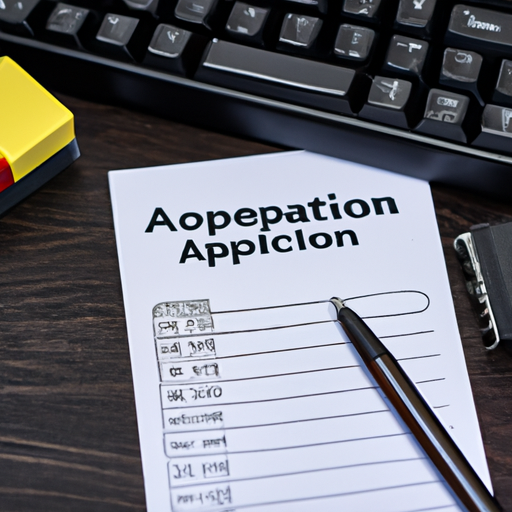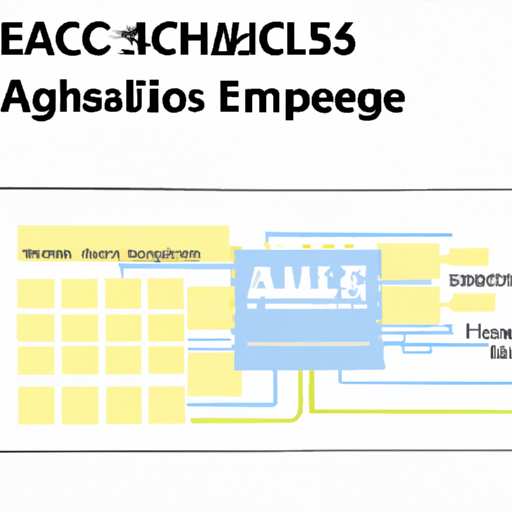


Application Development in Direct Digital Synthesis (DDS) for ECS-F1CE225K: Key Technologies and Success StoriesDirect Digital Synthesis (DDS) is a powerful technique for generating precise waveforms, such as sine, square, and triangular waves, through digital signal processing. The ECS-F1CE225K is a notable DDS chip that has gained traction in various applications due to its flexibility, precision, and ease of integration. Below, we explore the key technologies that underpin DDS and highlight some success stories that illustrate its impact across different industries.
Key Technologies in DDS1. Phase Accumulator 2. Look-Up Table (LUT) 3. Digital-to-Analog Converter (DAC) 4. Frequency Tuning 5. Modulation Techniques 6. Integration with Microcontrollers 1. Telecommunications 2. Signal Generators 3. Medical Devices 4. Aerospace and Defense 5. Audio Applications 6. Industrial Automation Success Stories ConclusionThe ECS-F1CE225K and DDS technology have established a significant presence across various industries, from telecommunications to medical devices and beyond. The key technologies that enable DDS, such as phase accumulation, look-up tables, and DAC integration, contribute to its versatility and effectiveness. The success stories highlight the transformative impact of DDS in real-world applications, showcasing its ability to meet the demands of modern technology. As industries continue to evolve, the role of DDS in application development is likely to expand, offering new opportunities for innovation and advancement.

Application Development in Microcontrollers, Microprocessors, and FPGA Modules for S6008L: Key Technologies and Success StoriesDeveloping applications for microcontrollers, microprocessors, and FPGA modules like the S6008L involves a blend of hardware and software engineering. The S6008L, while not widely recognized in the literature, can be treated as a representative platform for embedded systems development. Below are key technologies and notable success stories in this domain.
Key Technologies1. Microcontrollers (MCUs)2. Microprocessors3. FPGA (Field-Programmable Gate Array)4. Embedded Software Development5. IoT Integration6. Machine Learning on Embedded Systems1. Smart Home Automation2. Wearable Health Devices3. Industrial Automation4. Automotive Applications5. Robotics6. Smart Agriculture Success Stories ConclusionThe development of applications using microcontrollers, microprocessors, and FPGA modules like the S6008L represents a dynamic and evolving field that merges hardware and software engineering. By leveraging the right technologies and learning from successful implementations, developers can create innovative solutions across various industries, from consumer electronics to industrial automation and beyond. The ongoing advancements in these technologies promise to further enhance the capabilities and applications of embedded systems in the future.

Application Development in PLDs (Programmable Logic Devices) for S6008L: Key Technologies and Success StoriesApplication development in Programmable Logic Devices (PLDs) like the S6008L involves utilizing the unique capabilities of these devices to create tailored hardware solutions for diverse applications. The S6008L, as a specific model of PLD, may have distinct features and specifications, but the fundamental principles of application development in PLDs are widely applicable. Below are key technologies and notable success stories related to PLD application development.
Key Technologies1. HDL (Hardware Description Languages)2. Synthesis Tools3. Simulation and Testing4. Embedded Systems Integration5. IP Cores6. Development Boards7. Debugging Tools1. Telecommunications2. Automotive Applications3. Consumer Electronics4. Industrial Automation5. Medical Devices Success Stories ConclusionThe S6008L and similar PLDs offer a versatile platform for developing a wide array of applications across various industries. By leveraging key technologies such as HDL, synthesis tools, and IP cores, developers can create innovative solutions tailored to specific needs. Success stories across telecommunications, automotive, consumer electronics, industrial automation, and medical devices underscore the potential of PLDs in driving technological advancements and enhancing product capabilities. As the demand for customized hardware solutions continues to grow, the role of PLDs like the S6008L will remain pivotal in shaping the future of technology.

Hot Swap Controllers: Overview and ApplicationsIntroduction to Hot Swap Controllers
Hot swap controllers are critical components in contemporary electronic systems, enabling the safe insertion and removal of circuit boards or components without disrupting the power supply. This functionality is vital in applications where continuous operation is paramount, such as telecommunications, data centers, and industrial automation. Core Functional Technology of Hot Swap Controllers
1. Power Management: Hot swap controllers regulate the power supply to devices being inserted or removed. They gradually apply power to mitigate inrush current, which can potentially damage sensitive components.
2. Voltage and Current Monitoring: These controllers continuously monitor voltage and current levels to ensure they remain within safe operating parameters. If any anomalies are detected, the controller can disconnect the load to prevent damage.
3. Control Logic: Hot swap controllers incorporate control logic that manages the sequence of events during insertion and removal. This includes enabling and disabling the power supply, signaling the system about the device's status, and managing fault conditions.
4. Fault Protection: Many hot swap controllers feature built-in protection mechanisms such as overcurrent protection, thermal shutdown, and short-circuit protection. These safeguards protect both the hot swap controller and the connected load from damage.
5. Communication Interfaces: Advanced hot swap controllers may include communication interfaces (like I2C or SPI) that facilitate communication with a host processor or other system components, providing status updates and diagnostics.
Application Development Cases1. Telecommunications Equipment: In telecom systems, hot swap controllers enable the replacement of line cards or other components without taking the entire system offline. This capability is crucial for maintaining service availability and minimizing downtime.
2. Data Centers: Hot swap controllers are extensively used in server and storage systems within data centers. They allow for the replacement of power supplies, cooling fans, and other components without downtime, thereby enhancing reliability and service continuity.
3. Industrial Automation: In industrial environments, hot swap controllers support the maintenance of control systems and machinery. Operators can replace faulty components while the system is operational, significantly reducing production interruptions.
4. Consumer Electronics: High-end consumer electronics, such as gaming consoles and high-performance PCs, utilize hot swap technology to enable users to upgrade or replace components like graphics cards or storage drives without shutting down the system.
5. Medical Devices: In medical applications, hot swap controllers are employed in devices that require high reliability and uptime, such as imaging systems or patient monitoring equipment. The ability to replace components without interrupting patient care is critical in these scenarios.
ConclusionHot swap controllers, including models like the 1N5243B-T, are essential for enhancing the reliability and maintainability of electronic systems across various industries. Their ability to manage power safely during component replacement is crucial for applications where downtime is unacceptable. As technology continues to advance, the functionality and integration of hot swap controllers are expected to expand, further improving system performance and user experience.
For developers, a thorough understanding of the core functionalities and application scenarios of hot swap controllers is vital for designing robust systems that meet the demands of modern electronic applications. By leveraging these controllers, developers can create systems that are not only efficient but also resilient to the challenges of continuous operation.

Shift Registers: Core Functional Technology and Application Development CasesShift registers are fundamental components in digital electronics, serving as memory circuits that facilitate the storage, transfer, and manipulation of data. Below, we delve into their core functionalities, types, and various application development cases.
Core Functional Technology of Shift Registers1. Data Storage: Shift registers consist of a series of flip-flops, each capable of storing one bit of data. The total number of flip-flops determines the register's capacity, allowing it to hold multiple bits simultaneously. 2. Data Shifting: By applying clock pulses, shift registers can shift data left or right. This shifting mechanism is crucial for moving bits through the register, enabling various data manipulation tasks.
3. Serial to Parallel Conversion: Shift registers can convert serial data (input one bit at a time) into parallel data (output multiple bits simultaneously). This feature is particularly useful in communication systems where data needs to be processed in different formats.
4. Parallel to Serial Conversion: Conversely, shift registers can take parallel data inputs and convert them into a serial output. This is essential for transmitting data over a single communication line, reducing the number of required connections.
5. Data Manipulation: Shift registers can perform operations such as data rotation, where bits are shifted in a circular manner, allowing for flexible data handling.
Types of Shift Registers1. Serial-In Serial-Out (SISO): Data is input and output serially, making it suitable for simple data transfer applications.
2. Serial-In Parallel-Out (SIPO): Data is input serially and output in parallel, ideal for applications requiring parallel data processing.
3. Parallel-In Serial-Out (PISO): Data is input in parallel and output serially, useful for converting multiple data lines into a single line for transmission.
4. Parallel-In Parallel-Out (PIPO): Data is both input and output in parallel, allowing for high-speed data transfer without conversion.
Application Development Cases1. Data Communication: Shift registers are integral in communication systems, such as UART (Universal Asynchronous Receiver-Transmitter), where they convert parallel data from microcontrollers into serial data for transmission. This conversion is essential for effective data communication over limited bandwidth.
2. LED Control: In applications where multiple LEDs need to be controlled, shift registers like the 74HC595 allow for the control of several LEDs using only a few microcontroller pins. This is achieved by serially shifting data to control the state of each LED, significantly reducing the number of required GPIO pins.
3. Memory Expansion: Microcontrollers often have a limited number of GPIO pins. By using shift registers, developers can expand the number of inputs and outputs, enabling control of more devices without needing additional microcontrollers.
4. Digital Signal Processing: Shift registers play a role in digital signal processing applications, such as filtering and buffering data streams. They can temporarily hold data while processing occurs, ensuring smooth data flow.
5. State Machines: Shift registers can be employed to implement state machines in digital circuits. The bits stored in the register represent the current state of the machine, allowing for efficient state transitions based on input conditions.
6. Data Serialization: In applications where data needs to be serialized for transmission over a single line, shift registers facilitate this process, ensuring that data integrity is maintained during the conversion.
ConclusionShift registers are versatile and essential components in digital electronics, enabling efficient data handling and manipulation across various applications. Their ability to convert between serial and parallel data formats makes them invaluable in communication systems, LED control, memory expansion, and more. Understanding their core functionalities and applications can significantly enhance the design and implementation of electronic systems, leading to more efficient and effective solutions.

Application Development in Multivibrators for 1N5236B-T: Key Technologies and Success StoriesThe 1N5236B-T is a Zener diode that serves as a critical component in various electronic applications, particularly in multivibrator circuits. Multivibrators are essential for generating square waves or pulse signals, which are widely utilized in timing applications, oscillators, and signal generation. Below is an overview of the key technologies and success stories associated with the application development of multivibrators using the 1N5236B-T.
Key Technologies1. Zener Diode Functionality2. Astable Multivibrator3. Monostable Multivibrator4. Bistable Multivibrator5. Integration with Microcontrollers1. Consumer Electronics2. Automotive Applications3. Industrial Automation4. Educational Kits5. Signal Generators Success Stories ConclusionThe 1N5236B-T Zener diode is integral to the development of multivibrator circuits across various applications. Its capability to provide stable voltage regulation enhances the performance and reliability of these circuits, making it a valuable component in consumer electronics, automotive systems, industrial automation, and educational tools. As technology continues to advance, the integration of the 1N5236B-T in innovative applications is expected to expand, leading to new success stories in the field of electronics. The ongoing exploration of its capabilities will likely yield further advancements in circuit design and functionality.

Overview of Drivers, Receivers, and TransceiversWhile the 1N5235B-T is a Zener diode primarily used for voltage regulation, understanding the broader context of drivers, receivers, and transceivers is essential for anyone involved in electronic design and communication systems. Below is a detailed exploration of these components, their core technologies, and application development cases.
Core Functional Technologies 1. Drivers
- **Function**: Drivers are essential for controlling other electronic components by providing the necessary current and voltage levels. They amplify input signals to ensure that the output can effectively drive the intended load.
- **Types**:
- **Digital Drivers**: These are used in digital circuits to drive logic levels, ensuring that digital signals are transmitted accurately.
- **Analog Drivers**: These amplify analog signals, such as audio signals, to drive speakers or other analog devices.
- **Motor Drivers**: Specifically designed to control motors, these drivers manage the power requirements for various types of motors, including DC, stepper, and servo motors. 2. Receivers
- **Function**: Receivers accept incoming signals and convert them into a usable format for further processing. They often include stages for demodulation, amplification, and filtering.
- **Types**:
- **Analog Receivers**: These are used for receiving analog signals, such as in radio or audio applications.
- **Digital Receivers**: These handle digital signals and often incorporate error correction and decoding mechanisms to ensure data integrity. 3. Transceivers
- **Function**: Transceivers combine the functionalities of both transmitters and receivers, enabling bidirectional communication. They are crucial in various communication systems.
- **Types**:
- **RF Transceivers**: Used in wireless communication systems, such as cellular networks and radio communications.
- **Optical Transceivers**: These convert electrical signals to optical signals and vice versa, playing a vital role in fiber optic communication.
- **Ethernet Transceivers**: Used in networking applications to facilitate data transmission over Ethernet cables. Application Development Cases 1. Automotive Applications
- **CAN Bus Communication**: Transceivers are integral to Controller Area Network (CAN) systems, allowing various electronic control units (ECUs) in vehicles to communicate reliably, even in electrically noisy environments. This is crucial for modern vehicles that rely on numerous interconnected systems. 2. Industrial Automation
- **Fieldbus Systems**: In industrial settings, drivers and transceivers are essential for communication protocols like Profibus and Modbus. These systems enable devices to communicate over long distances, ensuring reliable operation in harsh environments, such as factories and processing plants. 3. Consumer Electronics
- **Audio Amplifiers**: Drivers are widely used in audio applications to amplify signals for speakers, ensuring high-quality sound reproduction in home theater systems and portable speakers.
- **Wireless Headphones**: Transceivers enable Bluetooth communication in wireless headphones, allowing for seamless audio streaming and control. 4. Telecommunications
- **Fiber Optic Networks**: Optical transceivers are critical in telecommunications, facilitating high-speed data transmission over long distances with minimal signal loss. They are essential for internet infrastructure and data centers. 5. IoT Devices
- **Wireless Sensors**: In the Internet of Things (IoT), transceivers are used in wireless sensors to communicate data back to central systems, enabling remote monitoring and control of various applications, from smart homes to industrial IoT solutions. ConclusionWhile the 1N5235B-T Zener diode serves a specific purpose in voltage regulation, the understanding of drivers, receivers, and transceivers is vital for developing effective electronic systems. Each component plays a crucial role in ensuring reliable communication and control across various applications, from automotive to industrial and consumer electronics. Engineers must carefully consider the specific requirements of their applications to select the appropriate drivers, receivers, and transceivers, ensuring optimal performance and reliability in their designs.
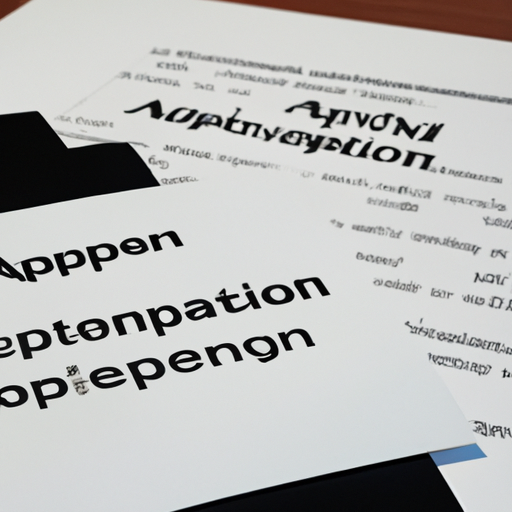
Application Development in Encoders, Decoders, and Converters for 1N5234B-T: Key Technologies and Success StoriesThe 1N5234B-T Zener diode is a critical component in electronic circuits, particularly for voltage regulation and protection. While it does not directly function as an encoder, decoder, or converter, it supports the integrity and reliability of circuits that utilize these technologies. Below, we explore key technologies related to encoders, decoders, and converters, along with success stories that illustrate their effective implementation.
Key Technologies1. Encoders2. Decoders3. Converters1. Industrial Automation2. Consumer Electronics3. Telecommunications4. Medical Devices5. Automotive Systems Success Stories ConclusionWhile the 1N5234B-T Zener diode itself is not an encoder, decoder, or converter, it plays a vital role in supporting the functionality of circuits that utilize these technologies. The integration of encoders, decoders, and converters across various industries has led to significant advancements in automation, consumer electronics, telecommunications, medical devices, and automotive systems. The success stories highlight the importance of these technologies in enhancing performance, reliability, and user experience across different applications. The 1N5234B-T Zener diode, by ensuring stable voltage levels, contributes to the overall effectiveness of these systems, making it an essential component in modern electronic design.

Application Development in Gates and Inverters for 1N5230B-T: Key Technologies and Success StoriesThe 1N5230B-T is a Zener diode that serves a vital role in various electronic applications, particularly in gates and inverters. Its ability to regulate voltage, clamp signals, and protect circuits makes it an essential component in modern electronic design. Below, we delve into the key technologies associated with the 1N5230B-T and highlight notable success stories that demonstrate its effectiveness.
Key Technologies1. Voltage Regulation2. Clamping Circuits3. Signal Conditioning4. Noise Filtering5. Temperature Compensation1. Consumer Electronics2. Automotive Applications3. Industrial Automation4. Telecommunications5. Renewable Energy Systems Success Stories ConclusionThe 1N5230B-T Zener diode is integral to the development of gates and inverters across multiple industries. Its capabilities in voltage regulation, overvoltage protection, and signal integrity enhancement make it a valuable component in contemporary electronic designs. The success stories from consumer electronics, automotive, industrial automation, telecommunications, and renewable energy underscore its versatility and significance in application development. As technology continues to advance, components like the 1N5230B-T will remain crucial in fostering innovation and ensuring the reliability of electronic systems.

Certainly! Buffers, drivers, receivers, and transceivers are fundamental components in both digital and analog electronic systems, each serving unique roles in ensuring signal integrity, data transmission, and effective interfacing between circuit elements. Below is a detailed overview of their core functional technologies and relevant application development cases.
BuffersPurpose: Buffers are primarily used to isolate different circuit sections, preventing loading effects that can degrade signal quality. They can also amplify signals.Purpose: Buffers are primarily used to isolate different circuit sections, preventing loading effects that can degrade signal quality. They can also amplify signals.Types: Common types include voltage buffers (voltage followers), current buffers, and line drivers.Types: Common types include voltage buffers (voltage followers), current buffers, and line drivers.Key Characteristics: Buffers typically feature high input impedance, low output impedance, and rapid switching capabilities, which help maintain signal integrity.Key Characteristics: Buffers typically feature high input impedance, low output impedance, and rapid switching capabilities, which help maintain signal integrity.Purpose: Drivers are designed to provide the necessary current to drive loads, such as LEDs, motors, or high-capacitance inputs.Purpose: Drivers are designed to provide the necessary current to drive loads, such as LEDs, motors, or high-capacitance inputs.Types: Common types include logic drivers, LED drivers, and motor drivers.Types: Common types include logic drivers, LED drivers, and motor drivers.Key Characteristics: Drivers are characterized by their high output current capability, fast switching times, and often include thermal management features to prevent overheating.Key Characteristics: Drivers are characterized by their high output current capability, fast switching times, and often include thermal management features to prevent overheating.Purpose: Receivers detect and amplify incoming signals, converting them into a usable form for further processing.Purpose: Receivers detect and amplify incoming signals, converting them into a usable form for further processing.Types: Types include analog receivers, digital receivers, and RF receivers.Types: Types include analog receivers, digital receivers, and RF receivers.Key Characteristics: Receivers are defined by their sensitivity, selectivity, and noise performance, which are crucial for effective signal detection.Key Characteristics: Receivers are defined by their sensitivity, selectivity, and noise performance, which are crucial for effective signal detection.Purpose: Transceivers combine the functions of both transmitters and receivers, enabling bidirectional communication in a single device.Purpose: Transceivers combine the functions of both transmitters and receivers, enabling bidirectional communication in a single device.Types: Common types include Ethernet transceivers, RF transceivers, and optical transceivers.Types: Common types include Ethernet transceivers, RF transceivers, and optical transceivers.Key Characteristics: Transceivers are characterized by their integrated design, support for various communication protocols, and power efficiency, making them suitable for compact applications.Key Characteristics: Transceivers are characterized by their integrated design, support for various communication protocols, and power efficiency, making them suitable for compact applications.1. Signal Isolation: In mixed-signal systems, buffers can effectively isolate analog signals from digital circuits, minimizing interference and ensuring accurate signal processing.2. Level Shifting: Buffers facilitate voltage level shifting between different logic families, such as converting signals from 3.3V to 5V, which is crucial in multi-voltage systems.3. Fan-out Applications: In digital circuits, buffers can drive multiple inputs without signal degradation, allowing for robust designs in complex logic circuits.1. LED Control: LED drivers are widely used in lighting applications to control brightness and color by modulating current, enabling dynamic lighting solutions.2. Motor Control: Motor drivers are essential in robotics and automation, allowing precise control over motor speed and direction, which is critical for applications like CNC machines and drones.3. High-Speed Data Transmission: In high-speed digital circuits, drivers ensure that signals maintain integrity over long distances, which is vital for applications like high-speed data buses.1. Wireless Communication: RF receivers are critical in wireless systems, such as Wi-Fi and Bluetooth, for receiving data packets and ensuring reliable communication.2. Data Acquisition Systems: In industrial applications, receivers capture sensor data for monitoring and control, enabling real-time data analysis and decision-making.3. Telecommunications: Digital receivers are integral to modems and communication devices, decoding transmitted signals for effective data transfer.1. Networking: Ethernet transceivers are used in local area networks (LANs) to facilitate data communication between devices, supporting high-speed data transfer.2. IoT Devices: Transceivers in IoT applications enable devices to communicate wirelessly, often utilizing low-power protocols like Zigbee or LoRa, which are essential for battery-operated devices.3. Telecommunications: Optical transceivers are vital in fiber-optic communication systems, enabling high-speed data transmission over long distances, which is crucial for internet infrastructure. Drivers Receivers Transceivers ConclusionBuffers, drivers, receivers, and transceivers are integral components of modern electronic systems, facilitating efficient signal processing and communication across various applications. Their roles span multiple industries, including telecommunications, automotive, consumer electronics, and industrial automation. A thorough understanding of their core technologies and application cases is essential for engineers and developers engaged in electronic design and innovation.
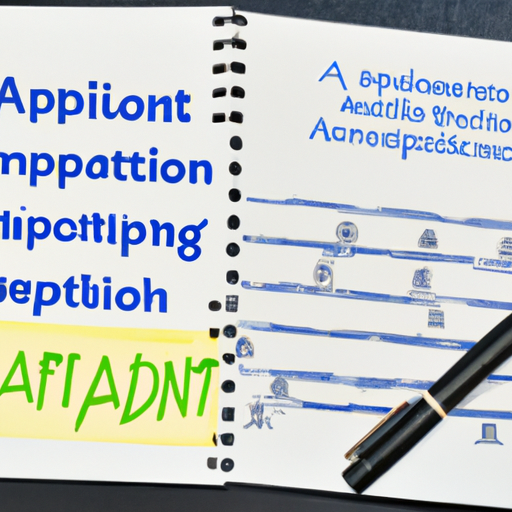
Application Development in Specialty Logic for 1N4148-T: Key Technologies and Success StoriesThe 1N4148-T is a highly regarded silicon switching diode, celebrated for its fast switching speed and reliability. Its versatility allows it to be employed in a myriad of applications, including signal processing, rectification, and protection circuits. Below, we delve into the key technologies that leverage the 1N4148-T and highlight notable success stories across various industries.
Key Technologies1. Fast Switching Technology2. Signal Clipping and Clamping3. Logic Level Shifting4. Rectification5. Temperature Stability6. Integration with Microcontrollers1. Consumer Electronics2. Telecommunications3. Automotive Applications4. Industrial Automation5. Medical Devices Success Stories ConclusionThe 1N4148-T diode has established itself as a versatile and indispensable component across various industries. Its fast switching capabilities, reliability, and ease of integration make it a favored choice among engineers and developers. As technology continues to advance, the 1N4148-T is poised to remain a cornerstone in electronic design, driving innovative solutions in consumer electronics, telecommunications, automotive, industrial automation, and medical devices. Its enduring legacy is a testament to its performance and adaptability in an ever-evolving technological landscape.
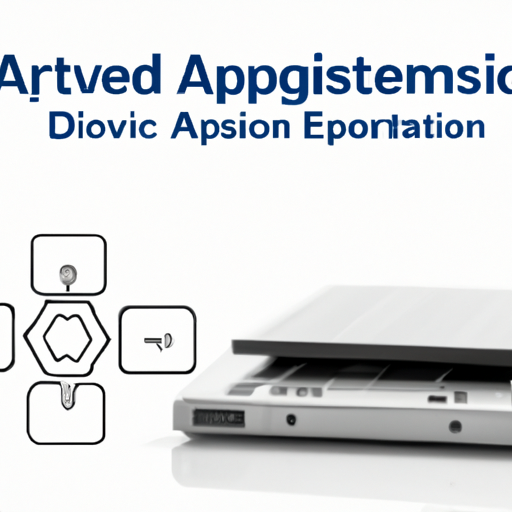
Application Development in Digital to Analog Converters (DACs) for 1N4006-T: Key Technologies and Success StoriesDigital to Analog Converters (DACs) are essential components in a wide range of applications, including audio processing, signal generation, and control systems. While the 1N4006-T is a general-purpose rectifier diode and not a DAC itself, it plays a supportive role in power supply circuits and signal conditioning for DAC applications. Below, we explore key technologies in DAC development and highlight success stories that illustrate their impact across various industries.
Key Technologies in DAC Development1. High Resolution and Precision2. High Sampling Rates3. Integration and Miniaturization4. Low Power Consumption5. Digital Signal Processing (DSP) Integration6. Wireless Communication Applications7. Feedback and Calibration Mechanisms1. High-Fidelity Audio Systems2. Medical Imaging Technologies3. Telecommunications Advancements4. Consumer Electronics Innovations5. Industrial Automation Solutions6. Automotive Applications Success Stories ConclusionWhile the 1N4006-T diode is not directly related to DAC technology, it serves an important role in the power supply and signal conditioning circuits that support DAC applications. The advancements in DAC technology have led to significant improvements across various fields, from consumer electronics to medical devices, showcasing the versatility and importance of DACs in modern technology. As the demand for high-performance and energy-efficient solutions continues to grow, DAC technology is expected to evolve further, paving the way for new applications and innovations. The integration of components like the 1N4006-T in these systems underscores the collaborative nature of modern electronic design, where various technologies work together to achieve optimal performance.



